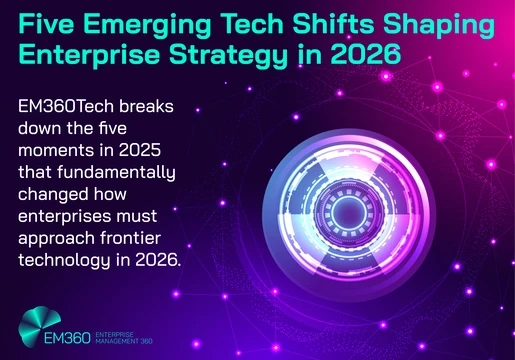This article was contributed by Darren Doyle, Associate VP at HCL Technologies

Over the last few months, many organisations found themselves forced to make the switch to remote operations and adopt a slew of technologies across the business, as they attempted to navigate the sudden, COVID-19 induced reality of social distancing and lockdowns. Amidst all these changes, it is important to understand that there is a distinct line between tech adoption and digital transformation.
At its core, digital transformation refers to the process of placing the end-customer, and subsequently all the stakeholders across the value chain at the centre of a business process experience. It is an inclusive process where all the stakeholders across verticals are in alignment within a business model that delivers value by adopting the latest advancements in technologies like AI, machine learning, cloud computing, IoT, in tandem with the people that make up the organisation, to create and drive customer-centric experiences.
Merely purchasing and implementing a software suite in response to a localised issue does not equate to digital transformation. Organisations must therefore consider two key points: recognising and responding to the shifting trends in consumer behaviour and avoiding siloed initiatives that target specific issues.
A global willingness for digital solutions
If there is one place where COVID has placed us ahead of ourselves, it is the rate at which people are adopting digital channels to various ends. The post-COVID world has led to an unexpectedly increased customer willingness to try new channels for interacting with businesses. In most sectors, at least a 50% increase in digital adoption is coming from new users, and this trend is visible across geographies and industries.
Some sectors such as retail and entertainment are performing better than others, and newer models in the emerging fields of telemedicine and online fitness programmes are gaining traction too. Traditional sectors such as banks, which typically have a relatively higher resistance to new technologies, are also showing an increased rate of adoption . Top players in banking are going paperless across their business processes, using smart solutions that leverage the latest tech developments to deliver frictionless experiences to their end-customers. As a result, banks are reporting higher satisfaction, greater revenues, and capabilities for dynamic expansion with agility. The trend is clear with both neo-banks like Chime, and established global players like Citigroup, who are reducing their physical footprint and focusing on digital channels, improving efficiency while simultaneously driving better customer experience. Such overarching strategic moves are good examples of digital transformation done right.
To take a second example from a different industry, automotive insurance offerings can be enhanced by building auto-crash detection capabilities, and the towing, assessments and claims processes can be taken digital. This will not only lead to highly optimal operations, but will also help drive higher customer satisfaction and improve returns.
Digital transformation helps companies drive changes strategically through an ongoing process where being receptive to changing consumer trends helps in the formulation of effective roadmaps. These roadmaps can then be used to build better value propositions by choosing the right technological advancements, leading to all-round benefits.
Transformation over optimisation
When big organisations shift to the latest architectures and deploy cutting-edge solutions, they often anticipate that these changes will help create better value propositions. According to a report, 62% organisations are struggling to define the objectives and outcomes of digital transformation. While digital transformation does optimise existing processes, real transformation places the customer at the heart of this change. How is the shift to cloud enhancing the value proposition of your existing service and client management processes? Are your product offerings in line with the latest trends in consumer behaviour, and is the marketing team making use of the right channels? To be able to give the right answers to these questions, it is crucial to avoid siloed initiatives that solve singular challenges and correspond to teams or departments rather than the organisation as a whole.
To leverage these questions to drive positive change, senior leadership must not only embed true ownership in product roles but also ensure that the product strategy is fine-tuned to tasks that negotiate portfolio offerings with concrete features in alignment with the current organisational strategy. For example, by using cloud infrastructures with IoT and simple protocols for intelligent devices, companies operating in home goods and services industries can realign their strategy to deliver products that add value to the customer in an increasingly home-based economy. The key here is to recognise the links that bridge the biggest gaps between the organisational strategy and its execution.
A practical approach to digital innovation
While digital adoption and remote work are enabling companies to function in a mildly coagulated COVID economy, top players are differentiating themselves by transforming the core of their business models. For example, global fashion giant ZARA, which led the digital revolution in the fast fashion industry, recently announced plans to invest another $1bn to enhance its digital operations by integrating its online store with physical stores. As a result, the company reported a 90% increase in online sales during the global lockdown. Whilst business models differ across industries, the ability to deliver value digitally is rapidly becoming a hot ticket to claim a chunk of the digital economy.
In the coming months, an increasing number of companies will succeed in optimising their businesses through the adoption of digital technologies. However, being shocked into tech-adoption is a far cry from true digital transformation. Enterprises that wish to come out of the current situation stronger, and with long-lasting competitive advantages will need to take a more thoughtful, cohesive approach. This will involve pursuing all-round digital transformation to deliver offerings that respond to the needs of today’s digital travellers, and build truly digital, forward-looking experiences for their employees and customers.







Comments ( 0 )